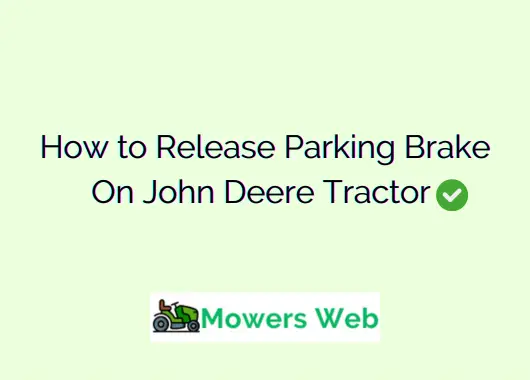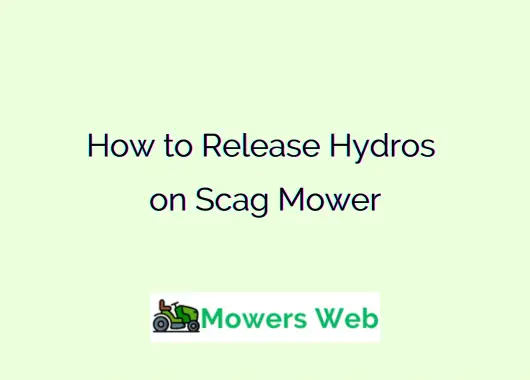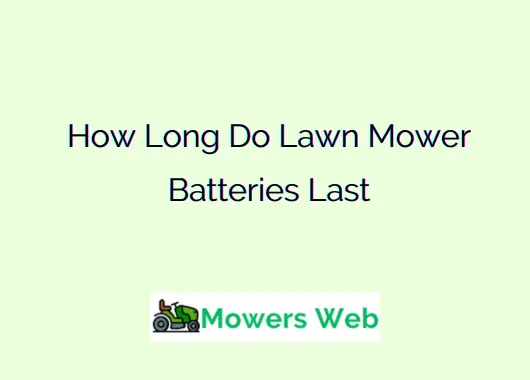One crucial aspect of operating your John Deere tractor is understanding how to release the parking brake. Properly engaging and disengaging the parking brake is essential for both safety and the efficient operation of your tractor.
In this post, we’ll provide a detailed, step-by-step process to release the parking brake on various John Deere tractor models. Let’s go.
How to Release Parking Brake On John Deere Tractor
Before attempting to release the parking brake, ensure the following:
- The tractor is on level ground to prevent unintended movement.
- The engine is off, and the key is removed from the ignition.
- All attachments and implements are lowered to the ground for stability.
1. Locating the Parking Brake
The location and design of the parking brake can vary depending on the model of your John Deere tractor. Generally, it can be found near the operator’s seat, either as a lever or a pedal. Consult your tractor’s manual for the exact location.
2. Releasing the Parking Brake on John Deere Tractors
Lever-Type Parking Brake
- Sit in the Operator’s Seat: Ensure you are seated comfortably with a clear view of all controls.
- Identify the Parking Brake Lever: usually located on the right-hand side of the seat.
- Depress the Brake Pedal: Press the main brake pedal with your foot.
- Release the Lever: Pull the parking brake lever upwards slightly to disengage the locking mechanism, then push it down slowly to release the brake.
Pedal-Type Parking Brake
- Sit in the Operator’s Seat: Ensure you are seated comfortably.
- Identify the Parking Brake Pedal: Often found on the left side of the operator’s platform.
- Depress the Main Brake Pedal: Press the main brake pedal with your foot to ensure the tractor is stationary.
- Release the Parking Brake Pedal: Push down on the parking brake pedal to disengage it, then slowly release it.
3. Verifying the Parking Brake is Released
Once you have released the parking brake, it is essential to verify that it is fully disengaged:
- Check Indicator Lights: Some John Deere tractors have indicator lights on the dashboard that show the status of the parking brake.
- Test Movement: Carefully attempt to move the tractor forward or backward slightly to ensure the brake is released.
Read John Deere SPN Codes(A to Z Codes)
What is a Parking Brake?
The parking brake, also known as an emergency brake or hand brake, is a critical component in tractors and other vehicles. It is designed to keep the tractor stationary when parked, preventing it from rolling away on slopes or uneven ground.
Unlike the main braking system, which operates on all wheels, the parking brake usually locks the rear wheels or a specific wheelset to keep the tractor stable.
Importance of the Parking Brake
Using the parking brake correctly is essential for:
- Safety: Prevents accidents and injuries caused by unintentional rolling.
- Maintenance: Reduces wear and tear on the transmission and main brakes.
- Operational Efficiency: Ensures the tractor remains in place when parked, especially on slopes.
Read 8 Common John Deere 850 Problems (With Solutions)
Common Issues and Troubleshooting
Parking Brake Stuck
If the parking brake does not release:
- Inspect for Obstructions: Check for debris or objects that may be blocking the mechanism.
- Lubricate Moving Parts: Apply a suitable lubricant to the brake mechanism to ensure smooth operation.
- Consult the Manual: Refer to the tractor’s manual for specific troubleshooting steps for your model.
Brake System Maintenance
Regular maintenance of the braking system is crucial for safe operation. This includes:
- Inspecting Brake Components: Regularly check the brake pads, discs, and cables for wear and tear.
- Hydraulic Brake System: For models with hydraulic brakes, ensure the brake fluid is at the correct level and free from contamination.
- Adjusting Brake Tension: Adjust the brake tension as per the manufacturer’s guidelines to ensure optimal performance.
Read 7 Common John Deere 318 Problems(With Solutions)
Safety Tips for Using Parking Brakes
Engaging the Parking Brake
Always engage the parking brake when:
- Parking on slopes or uneven ground.
- Leaving the tractor unattended.
- Performing maintenance or repairs.
Using Wheel Chocks
For added safety, especially on steep slopes, use wheel chocks to prevent the tractor from rolling.
Regular Training
Ensure all operators are adequately trained in the correct use of the parking brake and other safety features of the tractor.
Read John Deere Skid Steer Troubleshooting(5 Quick Ways To Fix)
Final Take
Releasing the parking brake on a John Deere tractor is a simple yet crucial task for ensuring safety and maintaining the tractor’s efficiency. By learning the steps outlined in this post, you can confidently operate your tractor, knowing that you are taking the necessary precautions to prevent accidents and maintain optimal performance.
FAQs
How do I locate the parking brake on my John Deere tractor?
The parking brake is typically located near the operator’s seat, either as a lever or a pedal. Consult your tractor’s manual for the exact location.
What should I do if the parking brake won’t release?
Check for obstructions, lubricate the mechanism, and consult the manual for troubleshooting steps. If the problem persists, seek professional assistance.
Why is it important to use the parking brake?
Using the parking brake prevents the tractor from rolling away when parked, reducing the risk of accidents and maintaining the transmission and main brakes.
Can I use wheelchocks with my John Deere tractor?
Yes, using wheelchocks provides additional stability, especially on slopes, ensuring the tractor remains stationary.
How often should I inspect the parking brake?
Regularly inspect the parking brake components for wear and tear, and perform maintenance as per the manufacturer’s guidelines to ensure safe operation.
What safety measures should I take when engaging the parking brake?
Always engage the parking brake on slopes, when leaving the tractor unattended, and during maintenance. Ensure all operators are trained in its correct use.




